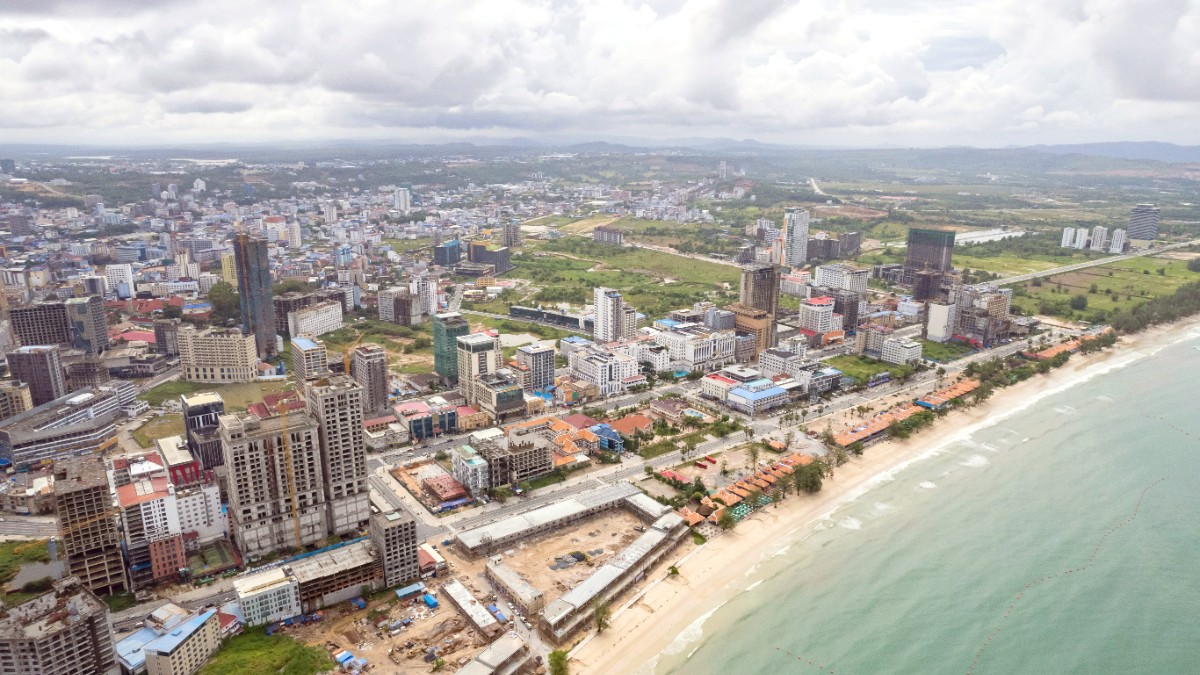
South Coast, Cambodia
This city is a starting point for exploring regional natural beauty, especially its famous islands. Here, discover a mix of relaxed beach areas, active markets, and new construction. This guide aids your journey through Sihanoukville, detailing its appeal and access to surroundings. It offers advice for a smooth, pleasant, and memorable visit.
Sihanoukville sits on a peninsula in southwest Cambodia, bordering the Gulf of Thailand. This location holds Cambodia's only deep-water port, a conduit for trade and visitors. The city is approximately 230 kilometers (140 miles) southwest of Phnom Penh, Cambodia's capital. Its coast position yields direct access to scattered islands, making it a popular starting point for island excursions.
The surrounding landscape presents coastal plains, hills, and a network of small rivers and estuaries flowing into the sea. This creates diverse environments, from sandy beaches to mangrove forests in areas like Ream National Park. The city's elevation varies, with some hill-built areas offering panoramic coastline and island views.
Sihanoukville's modern city story is brief, yet full of transformation. Before the mid-20th century, the area was a quiet coast without a major port. Cambodia used Vietnamese ports. The need for an independent maritime entrance led to the construction of Sihanoukville's deep-water port, commencing in 1955. The city's 1964 establishment honored then-King Norodom Sihanouk. This initiated a new era for Cambodia, granting direct sea access for international trade.
During the 1960s, Sihanoukville thrived, a popular resort for Cambodia's elite and foreign visitors. Its beaches were pristine, with a mood of growing wealth and leisure. Iconic structures, like the Independence Hotel, a modernist architectural landmark, appeared. The Khmer Rouge regime's 1975 rise abruptly stopped the city's progress, a period of suffering and isolation. After the Khmer Rouge's fall, Sihanoukville slowly recovered. The late 1990s and early 2000s saw its re-arrival as a tourist magnet. Backpackers found its appeal in affordable prices and a relaxed pace. Over the recent decade, Sihanoukville experienced rapid, large-scale development, mainly from foreign investment. This influx reshaped the city with high-rises, casinos, and hotels. While this development brought economic shift, it also poses infrastructure, environment, and local character preservation challenges.
Construction of deep-water port begins.
City officially founded and named.
Flourishing resort city for tourism.
Khmer Rouge regime halts development.
Re-emergence and rapid foreign-led development.
The Gulf of Thailand creates a tropical maritime climate in Sihanoukville. This condition means consistent warm temperatures, shaped by seasonal monsoons. The coastline itself features several distinct beaches, each with an individual appeal. Serendipity Beach and Occheuteal Beach are near the main ferry pier and city activity. Otres Beach, a short distance south, yields a more relaxed atmosphere. Independence Beach and Sokha Beach host larger resorts and private sandy areas. This varied geography presents different experiences, from busy urban zones to secluded coastal spots, all close by.
Serendipity Beach and Occheuteal Beach buzz with activity and ferry connections. Otres Beach provides a calmer, more bohemian environment. Independence and Sokha beaches feature luxury resorts and private sections of sand. This variety caters to different preferences, from lively to tranquil.
Sihanoukville's tropical maritime climate means warm temperatures year-round, with seasonal monsoons influencing the weather.
Sihanoukville's journey from a quiet coast to a bustling port city marks a significant chapter in Cambodia's recent history, a testament to its evolving role in the region's economy and tourism.
Sihanoukville presents a complex picture of a coastal city in transition. Here, golden beaches meet rising construction, and traditional Cambodian life merges with a fast-paced, modernizing economy. A quick overview below:
Sihanoukville provides access to some of Cambodia's most beautiful islands, making it a practical base for a coastal adventure.
Southern Cambodia, on the Gulf of Thailand.
Islands (Koh Rong, Koh Rong Sanloem) with beaches and clear waters.
Undergoing rapid development, busy, sometimes chaotic, with ongoing construction.
Sihanoukville has several distinct beaches. Otres Beach maintains a relaxed, bohemian atmosphere. Independence and Sokha beaches host luxury resorts. Serendipity Beach is busy and a ferry access point. Abundant fresh seafood defines the food scene. Local Khmer eateries, street food, and a growing selection of international and Chinese restaurants are present. Activities focus on island day trips, snorkeling, diving, and beach relaxation. Ream National Park presents nature excursions.